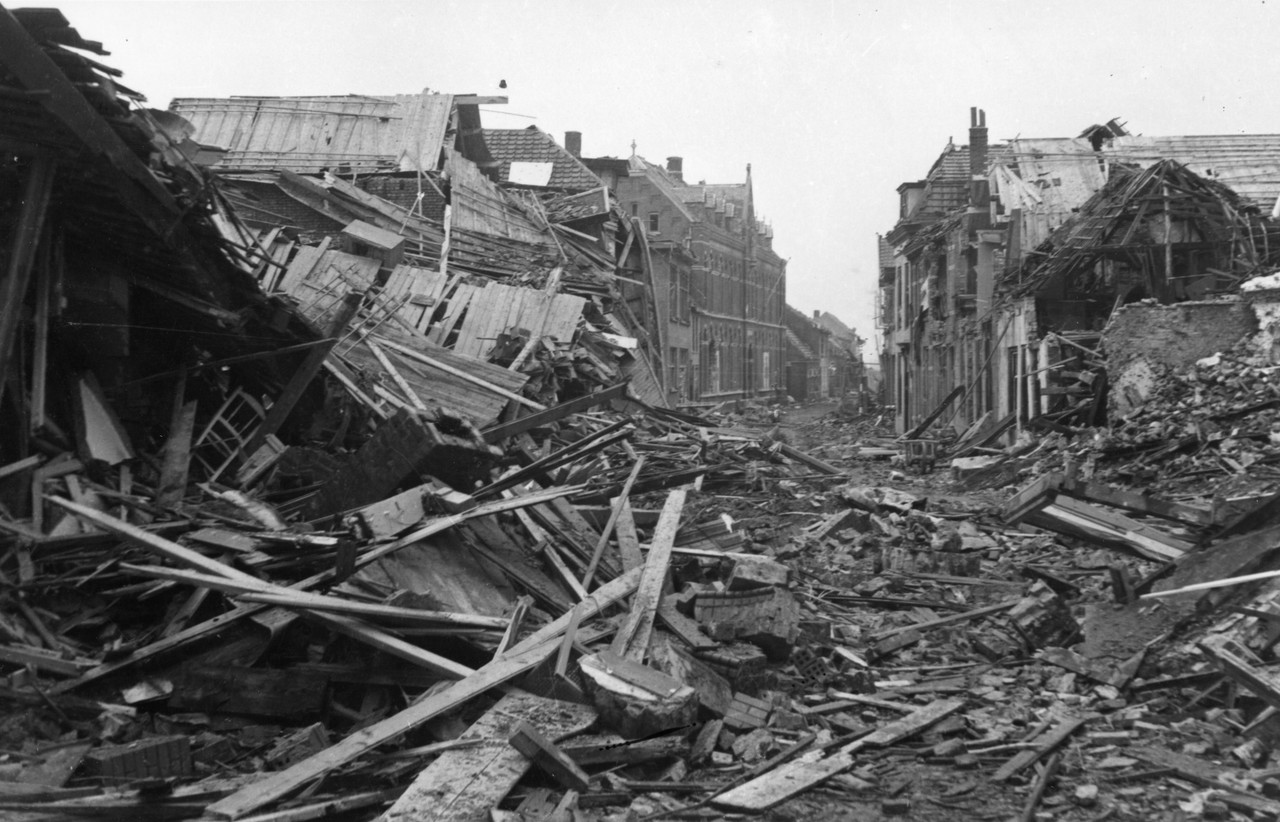Before Canadian troops invaded western Zeeuws-Vlaanderen, hailing from the beaches of Hoofdplaat and over the Leopold Canal, they shelled various villages and towns. It was the Canadian Supreme Command's tactic to strike their targets with heavy artillery and prolonged air raids before starting an attack. By doing this, they wanted to avoid a large number of losses. The fact that the population was greatly affected was "unavoidable" and considered collateral damage.
On 11 October 1944, Oostburg was also severely hit, resulting in 106 deaths and 353 buildings destroyed. The Allied bombs, however, barely found the German defences. When Canadian units drove the German troops from Oostburg by the end of October, they found a city totally destroyed.
After the war, reconstruction began. Although many towns and villages were restored to their former glory, an innovative plan was implemented in Oostburg. One of the oldest settlements in Zeeland was given a contemporary look. A new water tower was built on the east side of the city in 1950, which replaced its ravaged predecessor. In 1995, local artist Johnny Beerens turned the tower into a work of art in 1995. He painted a large crack on the tower, from which water droplets emerge.
Visit the Zeeuwse Ankers website (Zeeland Anchors) for comprehensive information, personal stories and videos about the Battle of the Scheldt.
